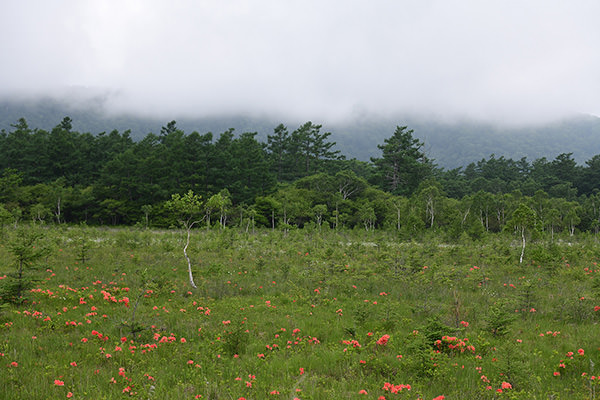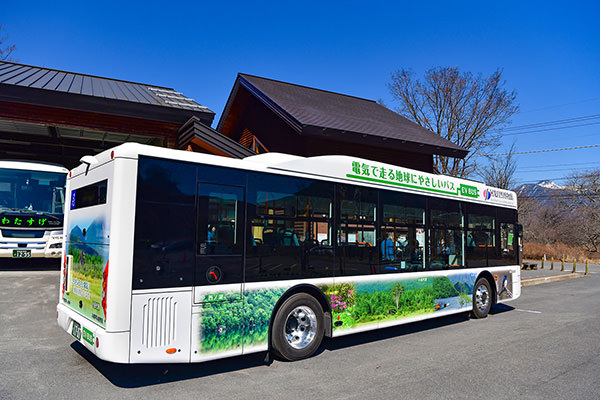This long but easy walk offers an excellent opportunity to experience the diverse landscapes that make Okunikko a popular destination for hikers and strollers. The trail follows the languid course of the Yugawa River as it makes its way from the dramatic cascade of Yudaki Falls through an airy forest of deciduous trees, then emerges onto the broad basin of the Senjogahara Marshland. Spread over some 400 hectares at an altitude of 1,400 meters, Senjogahara is one of Japan’s most famous wetlands. It was once a large lake created some 20,000 years ago by lava from an eruption of nearby Mt. Nantai (2,486 m), which formed a natural dam. Today it can be traversed on extensive boardwalks that protect the extensive yet fragile marsh ecosystem of plants and animals. Senjogahara means “battlefield,” a name that comes from a mythical clash in which the deity of Mt. Nantai transformed into a massive snake to defeat his rival deity from Mt. Akagi, 35 kilometers to the southwest, who had turned into a giant centipede.

The Trail
This easy trail is fairly flat over its six kilometers. It begins at Yudaki Falls, where hikers can stock up on beverages and enjoy an unimpeded view of the cascade. The first third of the trail is a shaded forest walk, after which hikers follow raised boardwalks built over the marsh. There are few trees in the marshland, leaving the route largely exposed to the sun. This trail finishes at the Akanuma Junction, which has a bus stop, but hikers can continue another two kilometers to Ryuzu Falls. Allow two hours to Akanuma, or three to continue to Ryuzu Falls.








